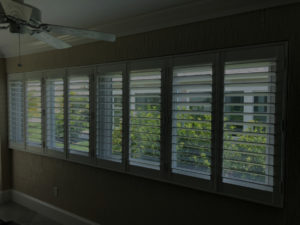
 Many people love the idea of getting window shutters or shutter blinds for their home, but one of the biggest concerns that is holding homeowners back is the initial upfront costs. Many people don’t know if they should spend that much money on shutter blinds. Tampa residents who are unsure should consider looking into the different ways that they can actually help someone save money in the long wrong. Many people do not believe that something as simple as replacing their curtains and blinds can save them money each month, but it has been proven that shutter blinds can help lower the energy bills of a home. Here are some ways that shutter blinds end up paying for themselves sin the long run.
Many people love the idea of getting window shutters or shutter blinds for their home, but one of the biggest concerns that is holding homeowners back is the initial upfront costs. Many people don’t know if they should spend that much money on shutter blinds. Tampa residents who are unsure should consider looking into the different ways that they can actually help someone save money in the long wrong. Many people do not believe that something as simple as replacing their curtains and blinds can save them money each month, but it has been proven that shutter blinds can help lower the energy bills of a home. Here are some ways that shutter blinds end up paying for themselves sin the long run.
Shutter Blinds Reduce Energy Consumption
One of the ways that shutter blinds have been proven to help pay for themselves is that they help reduce energy consumption by making an air conditioner or heater run less often. With Shutter Blinds, Tampa residents should know this has nothing to do with the way they are constructed, but the simple reason that they are a great insulator for a home. Unlike traditional curtains and blinds, shutter blinds wrap around the outside of a window sill, creating a tight seal that stops air in the inside of a home from escaping. Additionally, it stops air from entering into a home from the outside, causing a system to run more to regulate the temperature.
Air Conditioners Have Increase Longevity
Because an air conditioner does not have to run as often with shutter blinds, Tampa residents may indirectly save money by not having to replace their air conditioner or fix it. When an air conditioner is working harder to regulate the temperature inside a home because of air escaping or coming in from outside, parts wear down and break. Even if the whole system does not need to be replaced, replacing a few parts can be extremely costly and also uncomfortable while an air conditioner is not working. This is something that can be reduced when a homeowner makes the commitment to purchase shutter blinds.
*Disclaimer: The views expressed here are those of the authors and do not necessarily represent or reflect the views of Shutter Professionals*

